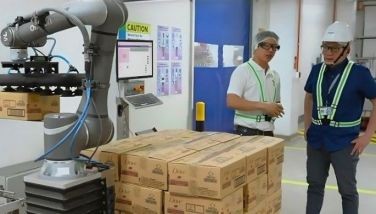Land of boxers, dictators and hostage takers
The Philippines is a collection of islands in a sleepy corner of the world famous for Imelda Marcos’s shoe collection, Manny Pacquiao, the Maguindanao Massacre and, now, the Quirino Grandstand hostage crisis. At least that’s what an outsider might describe the country we call home based on what he hears from the international press.
This Monday saw Twitter (admittedly not the most scientific barometer for global perceptions) ablaze with trending topics like “Hostage Taker,” “Mendoza,” “PNP,” “the Philippines” and “Quirino Grandstand,” the last of which was at the top of the list. Finally, the spotlight shone on the Quirino Grandstand — the same monument upon which the world should have cast its gaze on the day of Noynoy’s historic inauguration.
And yet the inauguration feels so long ago. Who would have guessed back then that CNN’s cameras would soon return, not to celebrate the beginning of a new, more hopeful time, but to confirm misconceptions about our supposedly dangerous country? The irony of such a tragedy occurring in what two months ago was a place of so much optimism would be more apparent to Western viewers if only the inauguration got as much airtime as this hostage crisis in the first place. For everything that has happened in the past year, we haven’t received as much international attention for anything else, perhaps with the exception of the Maguindanao Massacre. Bad news really does sell.
This raises the larger issue of the other things the world thinks it knows about the Philippines. Any article about us in Time, Newsweek or The Economist is likely to have some veiled reference to EDSA 1 and the Aquinos, if not the Marcoses. The New York Times’ one-page country profile on the Philippines, a jump-off point for many researchers abroad, is devoted largely to “the epic fight between the Marcoses and the Aquinos.” It paints a picture of an Imelda Marcos “battling to restore the Marcos dynasty” and a Bongbong running for “a national office that the family hopes will be a stepping-stone back to the presidency.” While this may not necessarily be untrue, focusing on it gives foreigners the impression that nothing else has happened in this country since 1986. Foreign journalists would be better off reading this newspaper’s front  page for a feel of the nation’s pulse than playing up the West’s longstanding fascination with the Marcoses, the Aquinos and Manny Pacquiao. There is so much more to this country of 90 million than boxers and shoes.
page for a feel of the nation’s pulse than playing up the West’s longstanding fascination with the Marcoses, the Aquinos and Manny Pacquiao. There is so much more to this country of 90 million than boxers and shoes.
Thus, Filipinos should forgive foreigners who unwittingly misunderstand our country. How can they not when the only time they hear about the Philippines is when a bomb explodes, a foreigner is kidnapped or an election ends in bloodshed? There are some questions for which ignorance is no defense. Filipinos living abroad have long had to cope with being asked “What’s it like to live in a hut?” and “Do you ride water buffalos to school?” But although horribly misinformed, questions like “Is it safe to go outside?” or “Are there lots of rebels in the streets?” are honest by-products of what foreigners hear in the news.
Yet this long saga of a self-conscious nation troubled by international misconceptions works both ways. It teaches us our own lessons on how to see the world. While CNN gives foreigners the false sense of understanding the Philippines, so it does for countries other than our own. After all, if we can’t trust their account of events in our own country where we have a point of reference, how can we trust their reports about countries which we have little else to rely on for information? Ask any Chinese person whether they work in a sweatshop or live in a Maoist commune. Or ask any Indian person whether they’ve had an arranged marriage or occasionally break into a Bollywood song and dance number.
If it’s any consolation, the Philippines is no more misunderstood than any other country in the world. The international press does no one any favors, whether during a military coup, a terrorist attack or a hostage crisis. Just as we have to deal with misconceptions about the dangers of traveling to our country, Indonesians can tell you that there’s more to their country than bombed night clubs, Thais can tell you that there’s more to theirs than a state of emergency and Iranians can tell you that not all of them have kind words for the Ayatollah. No one likes being misunderstood, but at least we Filipinos have company.
With all these stereotypes and misconceptions in the age of mass misinformation, perhaps the problem isn’t so much that no country understands the Philippines, but that no one understands anyone else at all.
* * *
The author is a high school senior at the International School Manila. For comments and suggestions, feel free to e-mail levistel@gmail.com.















